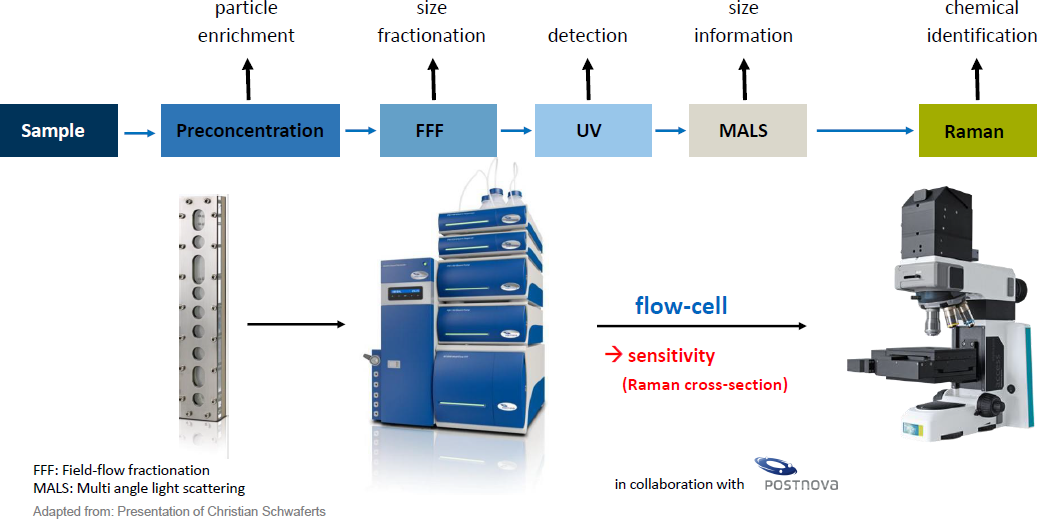Raman and Scanning Electron Microscopy-based Approaches for the Analysis of Micro- and Nanoplastic Particle Removal from Reverse Osmosis Membranes / BioMem
Objectives
-
Optimization and validation of the online-FFF-Raman coupling for the analysis of micro- and nanoplastics for the detection of particle removal from reverse osmosis membranes
-
Morphological characterization of micro- and nanoplastic particles and membranes via scanning electron microscopy (SEM)
-
Quantitative analysis of microplastic removal using TUM-ParticleTyper
Methods of Approach
- Raman Microspectroscopy (RM)
- Field-flow fractionation (FFF)
- Image analysis employing TUM-ParticleTyper
- Scanning electron microscopy (SEM)
Description
The general aim of this project is to develop a tool for the analysis of reverse osmosis membrane damage. Morphological and chemical changes as well as biofouling and the removal of membrane layers as micro- and nanoparticles will be detected with various methods to evaluate different strategies for membrane regeneration.
Morphological changes will be monitored using scanning electron microscopy (SEM), while chemical alterations and biofouling can be detected using Raman microspectroscopy (RM). For the analysis of particles different Raman techniques will be applied. Particles larger than 1 µm will be analyzed on a filter via image analysis using TUM-ParticleTyper. Particles in the size range from 5 µm to 100 nm (or below) can be detected using an online-coupled approach of RM and field-flow fractionation (FFF, in series with a multiangle light scattering detector and a UV detector). The online-coupling is achieved by using the optical trapping capabilities of the same laser that is used for Raman acquisition. Optical trapping keeps particles in the focus of the laser long enough for spectral acquisition. In general, FFF is a set of particle separation techniques, two of them will be used in this project. Asymmetrical field FFF (AF4) can be used to achieve separation according to the hydrodynamic size of the particles, while centrifugal FFF (CF3) separates particles additionally according to density.
The low concentrations of particles created by the degradation of membranes, makes a preconcentration step mandatory. This will be developed in cooperation with Postnova Analytics GmbH. Additionally, for the detection of small particles and low concentration further development of the online-FFF-RM setup will be necessary.
